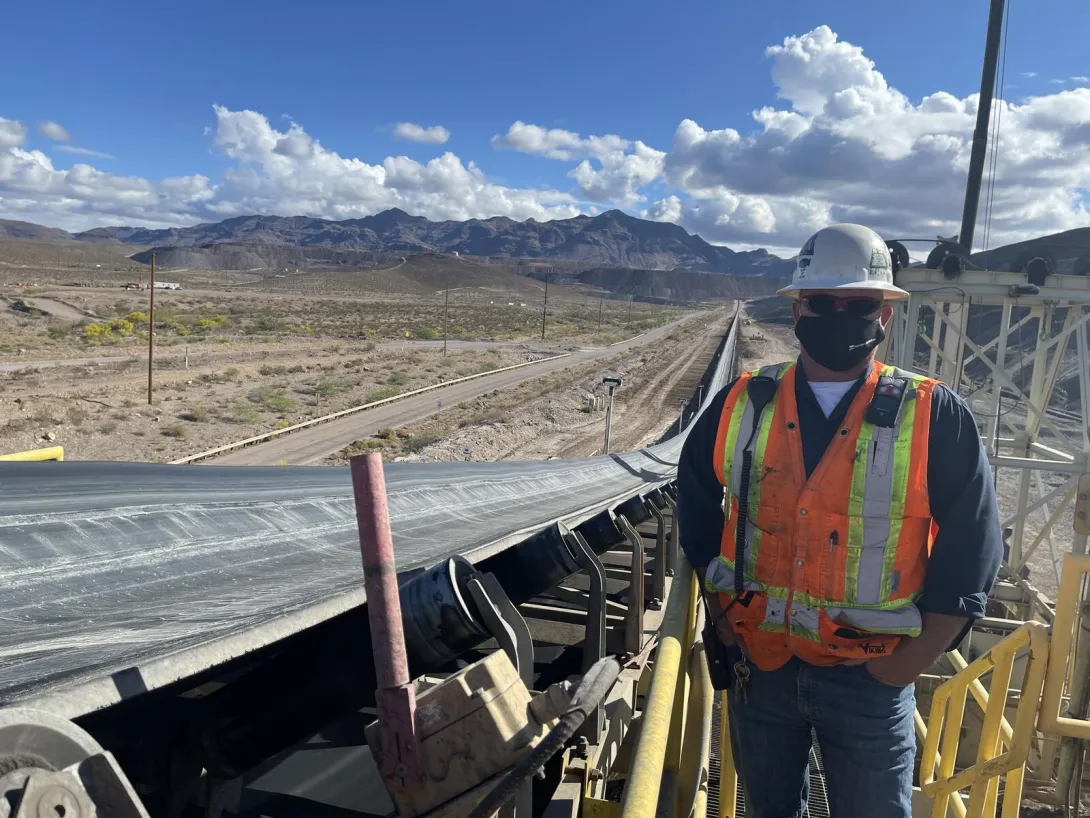Some problems require a lot more time and patience to remedy than do others. Such is the case for the Safford Carryback Team as it works to tackle a stubborn challenge in the pursuit of value for Crush and Convey operations.
No section of belt along Safford’s conveyor line has been immune to carryback, a sticky ore material residue that adheres to a conveyor belt and is carried back toward the conveyance starting point rather than dropping onto another belt or a leach pad lift as intended.
“After we started running Lone Star ore, carryback became very problematic for Crush and Convey’s operations and maintenance crews,” said Michael Briggs, Superintendent Technical-Crush and Convey.
Thousands of moving parts and other components on Safford’s 4.5-mile-long conveyor system must work in perfect concert to keep ore flowing from crusher to leach pad. Regular inspections and preventive maintenance aim to keep that concert from turning into a train wreck, but carryback often counters the effort. The Carryback Team is countering back.
“We’ve been testing some new belt cleaners and scrapers, and we hope to find something more durable than what we’ve been using,” said Kory Kilpatrick, Senior Supervisor-Crush and Convey and the Carryback Team’s Product Owner.
A scraper mounted at the discharge end of each belt removes most carryback, as the belt loops back under itself. A worn scraper allows an ever-thickening layer of carryback to pass through and cause problems before it falls off.
“If it gets past a scraper, even a thin layer of carryback extending several hundred yards is heavy enough to make the return side of the belt sag and twist, resulting in misalignment and damage,” Kilpatrick said.
A real ‘shovel-ready’ job
Carryback also makes a mess. Before the belt completes a full revolution, the distance of more than a mile in some cases, the moving and vibrating components along the conveyor’s underside cause most of the carryback to fall in clumps onto the conveyor frame and the ground.
“Our utility crews stay busy shoveling it out, and when it falls from an elevated conveyor, it’s a hazard for them and any other people or equipment below,” Kilpatrick said.
Sticky clays in the ore material make it virtually impossible to prevent carryback from forming, so product experimentation, enhanced carryback management practices and patience thus far are the only recourse.
“A new scraper we installed seemed to help a little bit on one conveyor line but not as much as we’d hoped,” Kilpatrick said. “Testing different ones may be a fail-fast idea, but we won’t give up.”
People power drives results
There are no fails when it comes to leveraging people as a resource. The team is collaborating with vendors to train maintenance personnel in servicing conveyor parts most vulnerable to the stresses from carryback. Also, extra inspection and maintenance steps recommended by empowered frontline Crush and Convey employees have helped greatly reduce premature wear of conveyor components.
“Outages and pileups at one conveyor dramatically decreased after we started monitoring and maintaining its scrapers and idlers more thoroughly,” Kilpatrick said. “Idler replacements dropped from 20 per week to two per week, and shoveling was needed only once a week.”
Those and other small-but-numerous successes are helping the team dial in an operation and maintenance regimen that similarly could reduce carryback-related events on all Safford’s conveyor lines.
“It’s a slow, trial-and-error process,” Briggs said. “We might not be able to eliminate carryback, but we can manage it more effectively around the clock.”
Photo: Kory Kilpatrick, Senior Supervisor-Crush and Convey in Safford and Carryback Team Product Owner, stands beside a conveyor equipped with a new scraper the team is testing.
